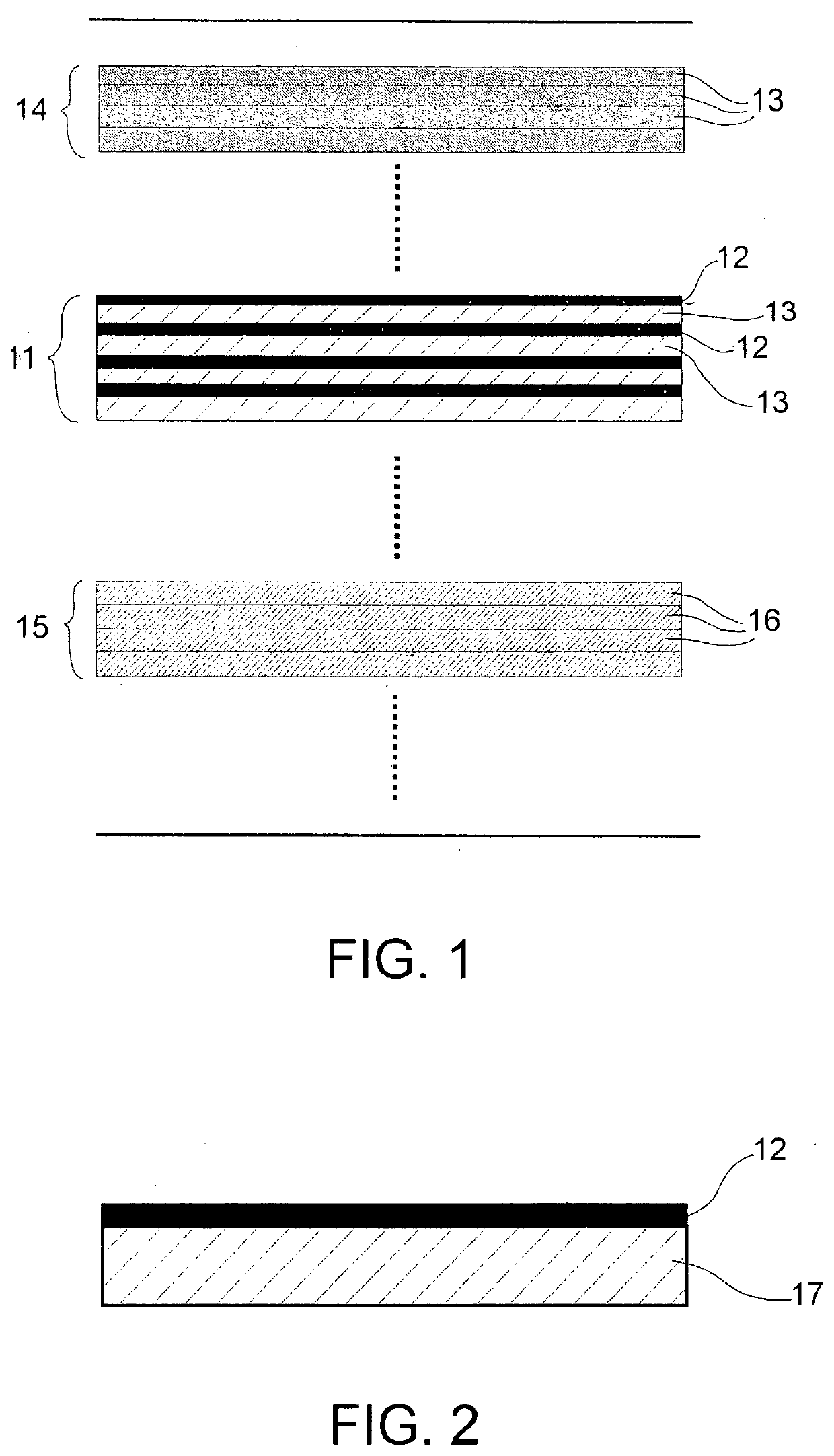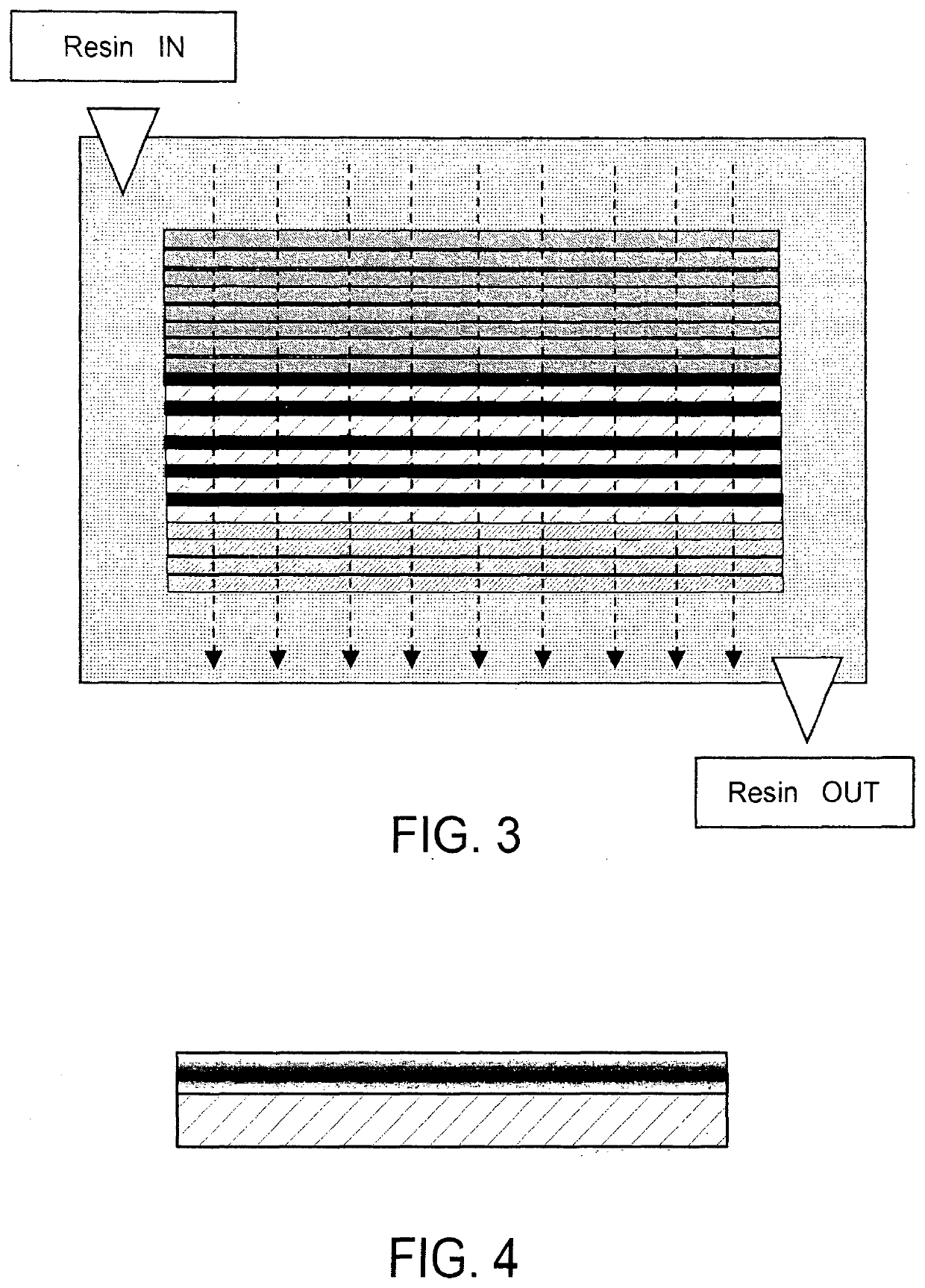Multilayer radar-absorbing laminate for aircraft made of polymer matrix composite material with graphene nanoplatelets, and method of manufacturing same
a composite material and radar technology, applied in the direction of synthetic resin layered products, transportation and packaging, chemistry apparatus and processes, etc., can solve the problems of unsatisfactory results of liquid resin infusion technique, inability to ensure the electromagnetic properties of the component, and inability to achieve uniform and controllable electromagnetic properties, so as to achieve the effect of improving avoiding deformation of the structural or mechanical properties of the component, and ensuring the stability of the componen
- Summary
- Abstract
- Description
- Claims
- Application Information
AI Technical Summary
Benefits of technology
Problems solved by technology
Method used
Image
Examples
first embodiment
[0076]A production process of the second block 11“electromagnetic absorber” (FIG. 1) preferably consists of the following steps. a plurality of dry fiber sheets is prepared, on which graphene nanoplatelets are deposited. In the selection of the graphene-based nanomaterial, the nanomaterial used is preferably composed of graphene nanoplatelets having a thickness in the range of 2 nm to 100 nm, but less than the diameter of the fabric fibers of the fiber sheets and the distance between the bundles of weft and warp fibers. Such distance is generally between 100 nm and 10 microns, so that graphene nanoplatelets may penetrate between the weft and warp fiber bundles of the reinforcement fabric for the desired thickness. The thickness penetrated by the graphene nanoplatelets is linked to obtaining the desired electromagnetic properties of the second block, and is between 5 and 150 microns. Graphene nanoplatelets may be produced with the desired dimensional geometrical properties by applyi...
third embodiment
[0109]In the method for the manufacture of the second block, the prepreg sheets are made downstream of the dispersion of the solution containing the nanoparticles on the dry fiber with the same specifications and methods described, ensuring the same range of depth of penetration into the fibers as detailed above.
[0110]Regardless of the specific embodiment of the method, from the electromagnetic point of view, through the method according to the present invention and the contextual design of the lay-up, a “Jaumann Absorber” is essentially made with an impedance adapter wherein conductive layers (due to the penetration and uniform integration of graphene in the fiber and resin) and non-conductive layers (impregnated glass fiber) alternate. The proposed design is different from the standard version of the “Jaumann Absorber” known in the literature, through the insertion, according to an aspect of the present invention, of a suitably designed impedance adapter formed by a succession of ...
PUM
| Property | Measurement | Unit |
|---|---|---|
| Length | aaaaa | aaaaa |
| Fraction | aaaaa | aaaaa |
| Fraction | aaaaa | aaaaa |
Abstract
Description
Claims
Application Information
 Login to View More
Login to View More - R&D
- Intellectual Property
- Life Sciences
- Materials
- Tech Scout
- Unparalleled Data Quality
- Higher Quality Content
- 60% Fewer Hallucinations
Browse by: Latest US Patents, China's latest patents, Technical Efficacy Thesaurus, Application Domain, Technology Topic, Popular Technical Reports.
© 2025 PatSnap. All rights reserved.Legal|Privacy policy|Modern Slavery Act Transparency Statement|Sitemap|About US| Contact US: help@patsnap.com



